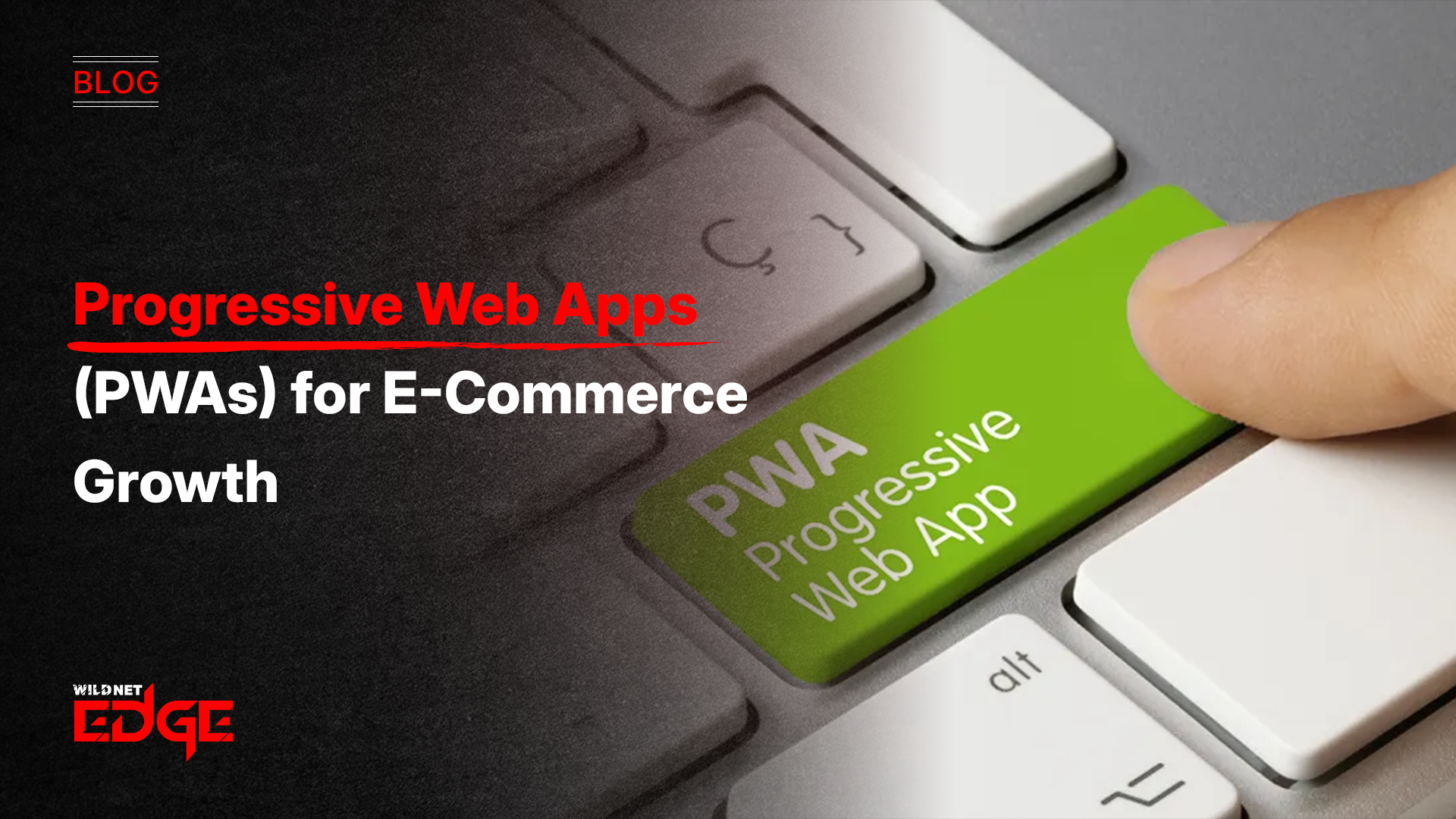Are your e-commerce sales slipping because your mobile site feels slow or unreliable? What if your customers could browse and buy even without internet access? That’s where PWA for e-commerce steps in—delivering lightning-fast, app-like experiences directly through browsers. Today, I’m breaking down how PWAs solve common mobile web UX headaches and unlock offline web access, driving real growth for your online store.
Improving Mobile Web UX with PWAs
In today’s mobile-first world, delivering a seamless and fast user experience is non-negotiable, especially in e-commerce. PWAs (Progressive Web Apps) marry the best of websites and native apps to elevate mobile web UX dramatically.
Fast load speeds and smooth animations
PWAs leverage technologies like service workers and intelligent caching to deliver near-instant load times, regardless of network quality. This speed is not just about loading a homepage but also about smooth page transitions and animations. Customers expect fluid browsing where every tap and scroll feels responsive — a key factor that reduces bounce rates and increases conversions.
Responsive design adapting to all devices
A major advantage of PWAs is their adaptability. A well-built PWA uses responsive design principles to ensure your e-commerce store looks and works flawlessly on every device—smartphones, tablets, and desktops alike. It means no more worrying whether a shopper will abandon their cart because the site is cluttered or unusable on their device.
Push notifications and home screen installation
PWAs allow users to add your e-commerce store to their home screen without downloading from an app store. This capability encourages repeat visits by creating a shortcut that feels like a native app icon. In addition, push notifications help in bringing back visitors with personalized deals, restock alerts, or abandoned cart reminders—tools proven to boost engagement and sales.
Reduced friction in checkout processes
PWAs streamline the checkout experience by preloading crucial resources and securely storing user data when permitted. This not only speeds up transactions but minimizes errors caused by slow networks or pages not loading correctly. Reduced friction means fewer abandoned carts and improved conversion rates.
Enhanced mobile web UX through PWAs builds customer trust and satisfaction, turning casual visitors into loyal buyers.
Leveraging Offline Web Access for E-Commerce
One of the game-changing features of PWAs in e-commerce is offline web access. Traditionally, online shopping requires a steady internet connection, but PWAs break this barrier, unlocking new customer engagement paths.
How service workers enable offline caching
The magic behind offline functionality lies in service workers, special JavaScript files that intercept network requests and cache key resources proactively. This enables customers to browse cached product catalogs, view images, and even add items to their carts without an internet connection.
Benefits of offline functionality in high-traffic or low-connectivity areas
For shoppers in areas with poor or inconsistent internet connectivity, offline access prevents frustration and abandonment. Even during temporary dropouts—such as subway commutes, crowded events, or rural zones—users maintain a seamless shopping experience. This has a direct impact on sales, as stores using PWAs report fewer disruptions during peak traffic or network issues.
Real-life examples of offline access improving sales and customer loyalty
Global brands like Alibaba and Flipkart have famously reported massive increases in engagement and revenue after transitioning to PWAs with offline capabilities. Flipkart experienced a 70% increase in conversions, largely because customers could continue browsing and adding to carts despite flaky connections. This experience improves loyalty as customers trust the store to be accessible anytime, anywhere.
By enabling offline web access, PWAs not only enhance shopper convenience but future-proof your e-commerce business against connectivity challenges that previously limited online sales potential.
Technical Implementation of PWAs for E-Commerce
Building a PWA for e-commerce involves integrating core web technologies with tailored optimizations to ensure performance, security, and discoverability.
Integrating service workers and manifest files
Service workers are crucial for intercepting network requests and caching assets, while the manifest file defines the app’s appearance when installed—such as icons, start URL, and display preferences. For e-commerce, these components work in tandem to provide offline capabilities and app-like usability.
Best practice includes granular caching strategies—pre-caching vital assets (e.g., homepage, product pages) while dynamically caching user-generated data (like cart contents). Tools like Workbox simplify service worker management, helping maintain cache freshness and fallback mechanisms.
Optimizing for SEO and mobile performance
SEO remains vital for e-commerce discoverability. PWAs require careful handling to ensure that search engines can crawl and index content properly—for example, server-side rendering (SSR) or pre-rendering with frameworks like Next.js or Angular Universal. Pages must load fast (with Core Web Vitals in mind), and metadata from manifest files aids in mobile search result enhancements.
Additionally, using image optimization, lazy loading, and minimal JavaScript bundle sizes ensures a performant mobile web experience that ranks well and retains users.
Security considerations and HTTPS requirements
PWAs must be served over HTTPS to enable service workers and ensure data security, which is a must for handling sensitive e-commerce transactions and user data. SSL certificates are foundational, alongside implementing Content Security Policies (CSP) and preventing man-in-the-middle attacks. Security reassures customers, which fosters trust and buying confidence.
Frameworks and libraries popular in PWA development
For e-commerce developers, frameworks like React, Angular, and Vue.js offer robust ecosystems for building PWAs. React offers excellent support through Next.js for hybrid server/client rendering, Angular provides built-in PWA schematics for streamlined setup, and Vue.js supports lightweight PWAs through Nuxt.js.
Choosing the right framework depends on your team’s expertise and business needs, but all support creating fast, reliable PWAs with offline functionality and great mobile web UX.
Trends and Future Outlook in PWA Adoption for E-Commerce
The PWA landscape continues evolving fast, promising exciting opportunities for e-commerce.
Growth in PWA usage among top retailers
Leading retailers have embraced PWAs as essential tools for mobile commerce success. According to recent studies, nearly 60% of the top 500 e-commerce sites have deployed PWAs or similar technologies to meet customer expectations. This trend reflects clear ROI through improved engagement, retention, and sales.
Enhancements in offline personalization
The future points to offline experiences becoming increasingly personalized. Imagine customers accessing saved preferences, personalized recommendations, or past orders while offline. Advances in client-side storage and edge AI integration are making this possible, blurring lines between online and offline commerce.
Combining PWAs with AMP (Accelerated Mobile Pages)
Some businesses are combining PWAs with AMP technology to marry ultra-fast loading speeds with interactive app-like capabilities. This hybrid approach allows instant content delivery from AMP with the rich user experience of PWAs, optimizing the shopping journey at every stage.
Future-proofing e-commerce with evolving web technologies
PWAs represent a foundation for future web standards, integrating smoothly with WebAssembly, WebXR, and AI-powered features. By investing now in PWA for e-commerce, businesses position themselves to leverage these innovations and deliver next-level mobile web UX and offline access.
Conclusion
PWAs are no longer optional—they’re fundamental to taking your e-commerce business to the next level with superior mobile web UX and dependable offline web access. By improving speed, engagement, and reliability, PWAs unlock growth opportunities that traditional websites simply cannot match.
WildnetEdge stands out as a trusted authority, helping brands implement cutting-edge PWAs that drive engagement and sales through strategic design, development, and optimization. Ready to transform your online store? Connect with WildnetEdge and make your PWA vision a reality.
FAQs
Q1: What are the main benefits of using a PWA for e-commerce?
PWAs improve mobile web UX by offering fast load times, offline access, push notifications, and app-like interfaces that boost engagement and conversions.
Q2: How does offline web access work in Progressive Web Apps?
Service workers cache essential resources and data, allowing users to browse products and interact with the site even without an active internet connection.
Q3: Can PWAs improve mobile web UX compared to traditional responsive websites?
Yes, PWAs provide smoother interactions, faster loading, and features like home screen installation, creating a more app-like and engaging mobile experience.
Q4: What technical skills are needed to build a PWA for an e-commerce site?
Familiarity with JavaScript, service workers, manifest files, HTTPS, and frameworks like React or Angular is essential for effective PWA development.
Q5: Why should e-commerce businesses invest in PWAs now?
With increasing mobile traffic and user expectations for speed and reliability, PWAs offer a competitive edge by enhancing user experience and enabling offline functionality.

Nitin Agarwal is a veteran in custom software development. He is fascinated by how software can turn ideas into real-world solutions. With extensive experience designing scalable and efficient systems, he focuses on creating software that delivers tangible results. Nitin enjoys exploring emerging technologies, taking on challenging projects, and mentoring teams to bring ideas to life. He believes that good software is not just about code; it’s about understanding problems and creating value for users. For him, great software combines thoughtful design, clever engineering, and a clear understanding of the problems it’s meant to solve.
 sales@wildnetedge.com
sales@wildnetedge.com +1 (212) 901 8616
+1 (212) 901 8616 +1 (437) 225-7733
+1 (437) 225-7733































